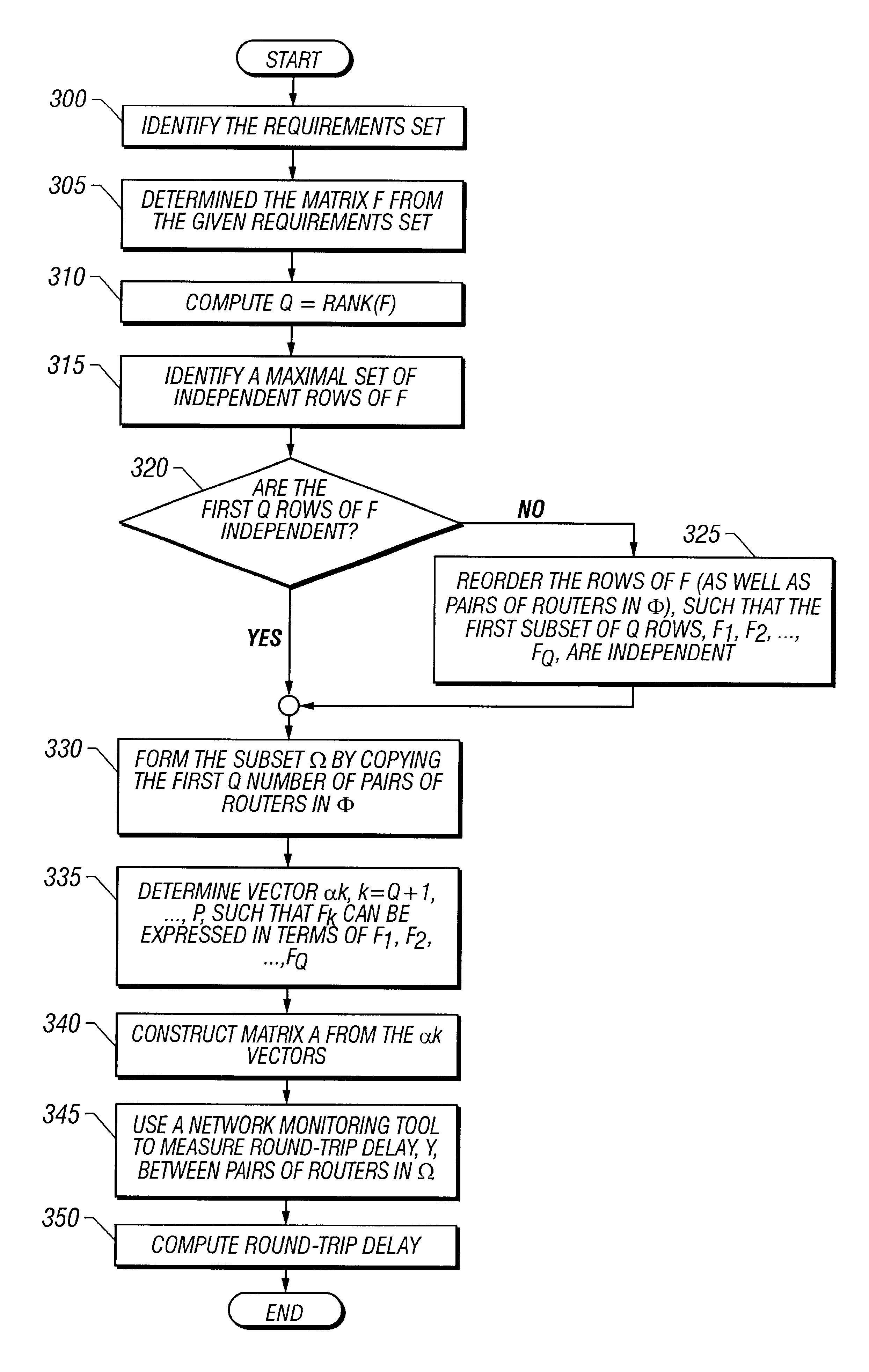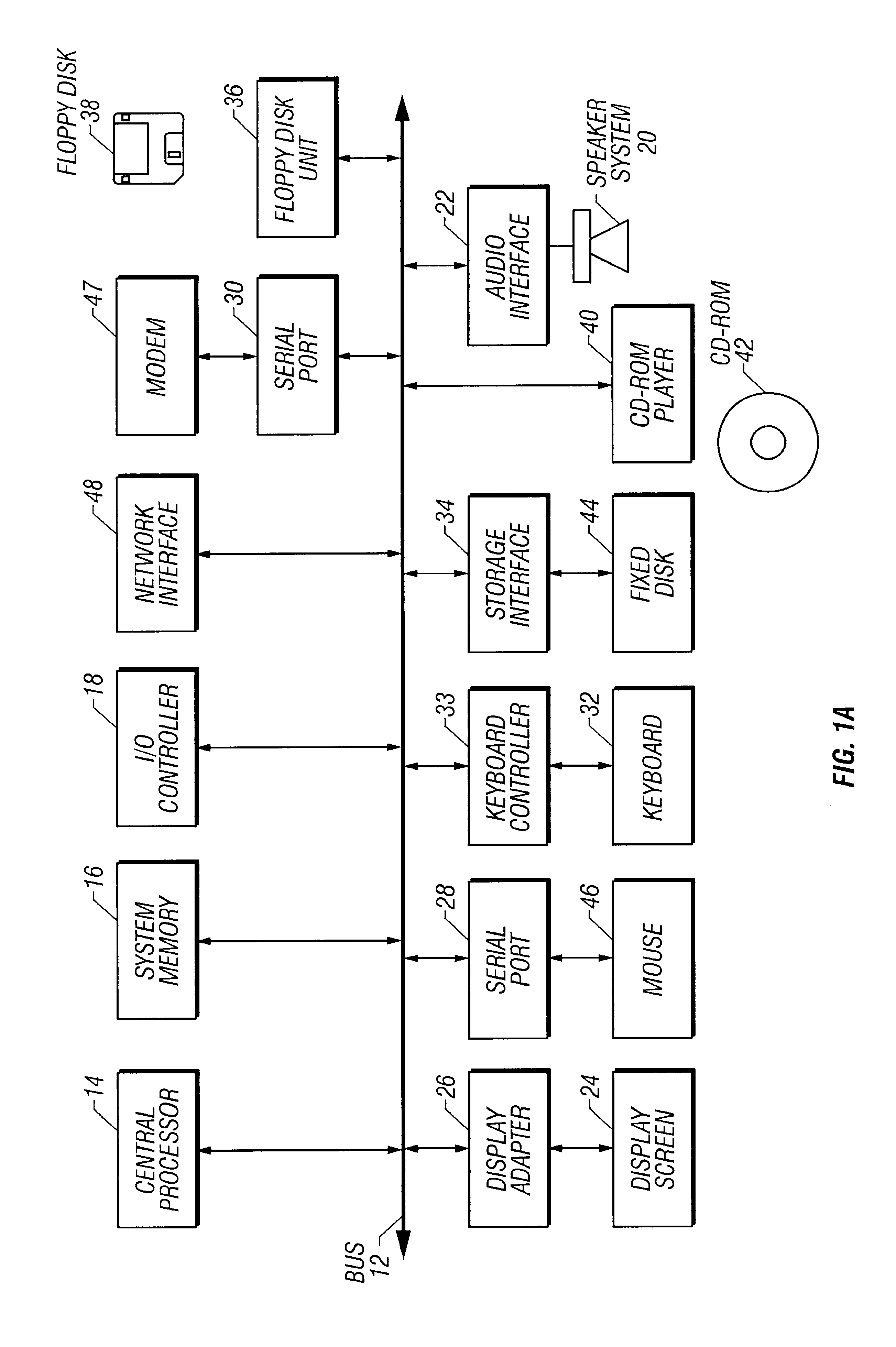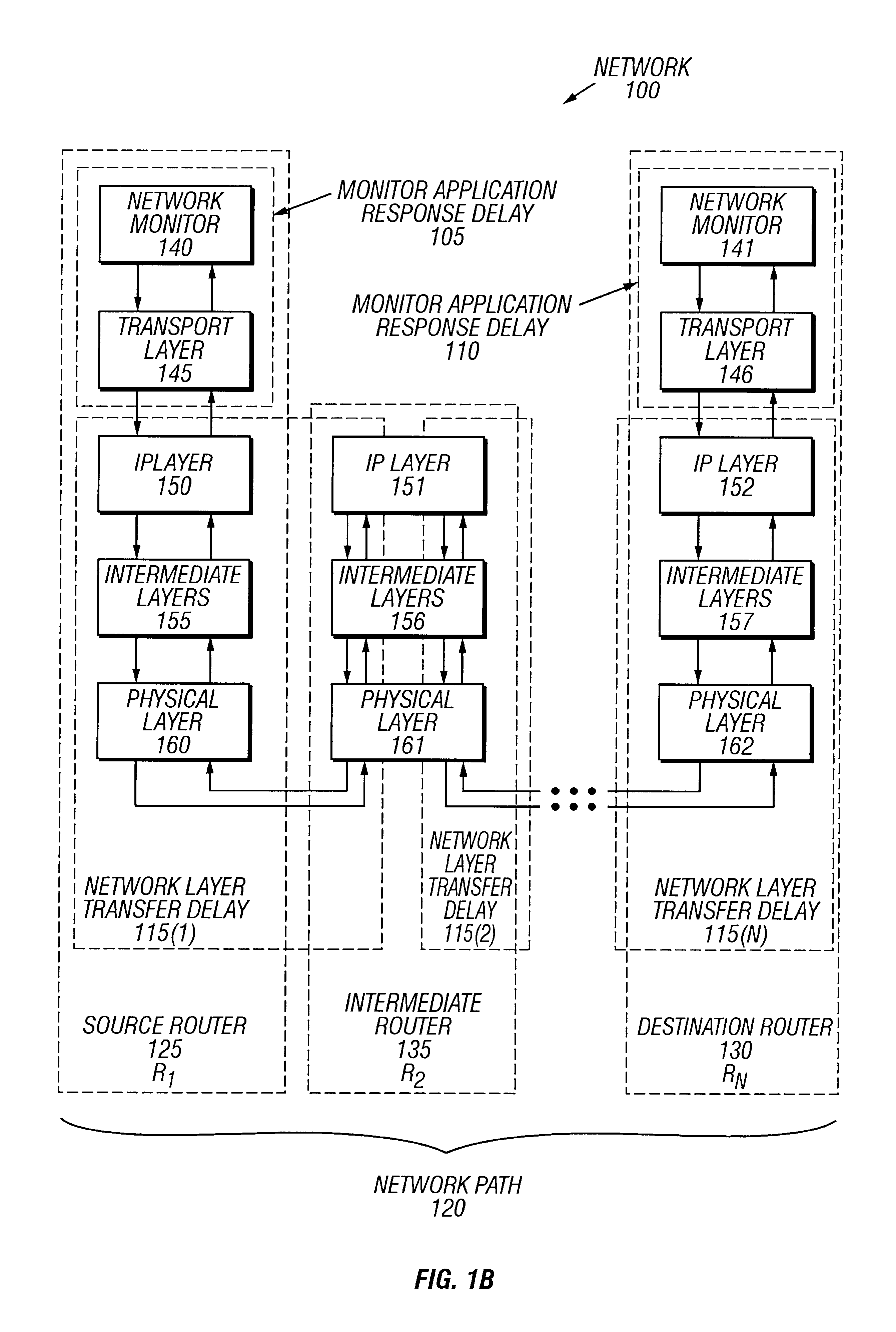Method and apparatus for estimating delay and jitter between network routers
a network router and delay estimation technology, applied in the field of computer networks, can solve the problems of jitter, delay deviation, data packets, etc., and achieve the effects of reducing traffic overhead, simple and easy implementation, and reducing the overhead of traffi
- Summary
- Abstract
- Description
- Claims
- Application Information
AI Technical Summary
Benefits of technology
Problems solved by technology
Method used
Image
Examples
example 1
Consider the enterprise network depicted in FIGS. 10A and 10B. Let the pair of routers be (R(1,1), R(4,1)). Because n1=3 and n4=2, sub_2_2 is applicable. As a result,
Ω={π1, π2, π3, π4, π5} (98a)
where
π1=(R(1,1), R(1,2)) (98b)
π2=(R(1,1), R(4,1)) (98c)
π3=(R(4,1), R(1,2)) (98d)
π4=(R(4,1), R(4,2)) (98e)
π5=(R(1,1), R(4,2)) (98f)
Further, the delay-components vector, xT=[D(1,1), D(1,2), c(1,4), D(4,1), D(4,2)]. An estimate of link-level round-trip delay vector, x, may be computed using [δD(1,1)] [0.50.5-0.500] [y1](99a)[δD(1,2)] [0.5-0.50.500] [y2](99b)[δc(1,4)]=[-0.500.5-0.50.5] [y3](99c)[δD(4,1)] [00.500.5-0.5] [y4](99d)[δD(4,2)] [0-0.500.50.5] [y5](99e)
An estimate of link-level round-trip jitter vector, x, may be computed using [σD(1,1)2] [0.250.250.2500] [γ12](100a)[δD(1,2)2] [0.250.250.2500] [γ22](100b)[δc(1,4)2]= [0.2500.250.250.25] [γ32](100c)[δD(4,1)2] [00.2500.250.25] [γ42](100d)[δD(4,2)2] [00.2500.250.25] [γ52](100e)
example 2
Letting the pair of routers be (R(1,1), R(2,1)), and because n1=3 and n2=1, sub_2_1 is applicable. As a result, in a more compact form than that just given,
Ω={π1=(R(1,1), R(1,2)), π2=(R(1,1), R(2,1)), π3=(R(2,1), R(1,2))} (101)
The delay-components vector, xT=[D(1,1), D(1,2), c(1,4)+D(2,1)]. An estimate of link-level round-trip delay vector, x, may be computed using [δD(1,1)] [0.50.5-0.5] [y1](102a)[δD(1,2)]= [0.5-0.50.5] [y2](102b)[δc(1,4)+D(2,1)] [-0.50.50.5] [y3](102c)
An estimate of link-level round-trip jitter vector, x, may be computed using [δD(1,1)2] [0.250.250.25] [γ12](103a)[δD(1,2)2]= [0.250.250.25] [γ22](103b)[δc(1,2)+D(2,1)2] [0.250.250.25] [γ32](103c)
It will be noted that it is not possible to apportion the delay or jitter between C(1,2) and D(2,1) separately since the number of routers in the second cluster is only 1.
example 3
Let the pair of routers be (R(3,1), R(2,1)). Because n3=1 and n2=1, sub_1_1 is applicable. Because Ω={π1=(R(3,1), R(2,1))}, no estimate of individual delay components is available.
V. Estimating Delay and Jitter in an Enterprise Network Coupled to a Backbone Having an Unknown Topology Using a Large Number of Router Pairs
A method according to one embodiment of the present invention for computing the measurements set, Ω, for a given requirements set, Φ, has been described. If the size of the set Φ is P, then the method involves finding a maximal set of independent vectors from a corresponding set of P row vectors. Such a computation may be unreasonably difficult if P is large (e.g., 10000 or more). Therefore, a method according to an embodiment of the present invention is now described that allows the measurements set to be directly obtained. Measurements of delay and jitter between pairs of routers in this set may then be used to estimate delay and jitter between any set of pairs of r...
PUM
 Login to View More
Login to View More Abstract
Description
Claims
Application Information
 Login to View More
Login to View More - R&D
- Intellectual Property
- Life Sciences
- Materials
- Tech Scout
- Unparalleled Data Quality
- Higher Quality Content
- 60% Fewer Hallucinations
Browse by: Latest US Patents, China's latest patents, Technical Efficacy Thesaurus, Application Domain, Technology Topic, Popular Technical Reports.
© 2025 PatSnap. All rights reserved.Legal|Privacy policy|Modern Slavery Act Transparency Statement|Sitemap|About US| Contact US: help@patsnap.com



